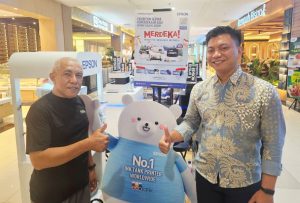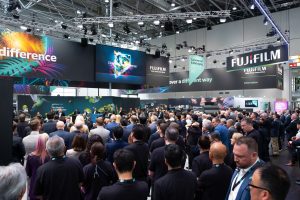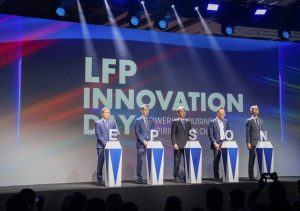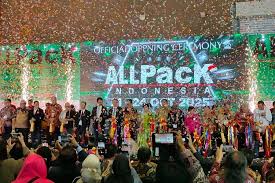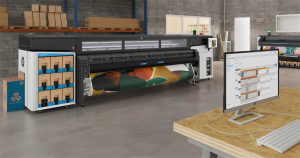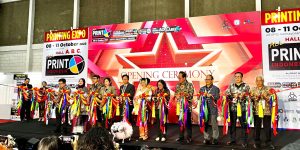
Dr. Burkhard Wolf, Head of Digital Technology at Gallus Ferd. Rüesch AG (Source: Gallus Ferd. Rüesch AG)
Ink consumption is one of the variable costs in digital printing. It varies from job to job and often sets the economic limits for the process. With the Gallus One, the newly developed, contact-free cleaning system reduces ink consumption. But is the reduction in ink consumption so significant that the total cost of ownership is also reduced? Yes, says Dr. Burkhard Wolf from Gallus Ferd. Rüesch AG explaining what is behind this innovation and how it reduces ink costs by up to 20%.
Dr. Burkhard Wolf is considered a dynamic innovator in digital printing, where he applies his digital and inkjet expertise as Head of Digital Technology. Together with his team, he is working on the development of new platforms for digital printing systems in label printing. He gained his experience at Heidelberger Druckmaschinen AG as well as during his university degree in mechanical engineering at TU Darmstadt.
Relevance of Ink Costs in Digital Printing
It is well known that ink costs in digital printing have a much greater impact on the total cost of ownership than ink costs in analogue printing processes. They influence the profitability of every print job and sometimes contribute to reducing the margin of a job to such an extent that it can be produced more cheaply in analogue than digital, especially for longer runs. It is therefore no wonder that converters focus on ink as a cost factor in digital printing and analyse very closely how much it affects the print run. Precise cost recording is an important prerequisite for keeping the total cost of ownership in digital printing under control.
Where Does Ink Consumption Occur?
Ink is not only required to achieve ink coverage in printing, it is also used to clean the nozzles when the print heads are flushed with ink. It is worth taking a closer look at the ink consumption that occurs there:
During the printing process, ink particles are deposited on the underside of the print bars and therefore also on the edge of the nozzles. Scattered light causes the ink particles to cure which are then difficult to remove. As a result, even the smallest deposits can cause a nozzle to start ejecting droplets at an angle, which impairs the print quality and makes it necessary to clean the print bar.
The scattered light which hits the print bars is emitted by the pinning modules, which are located directly next to the print bars. Their task is to partly cure the printing ink using UV energy before the next droplet of ink is added. This prevents the inks from running into each other, which means that the ink dots are reproduced sharply and there is no colour shift due to bleeding. UV pinning is therefore an indispensable part of the machine technology for coated papers and plastic films in high-speed digital printing machines.
Without pinning, the colours bleed as shown in the picture on the left. The UV rays of the pinning module in the picture on the right fix the ink droplets and prevent bleeding (source: Gallus Ferd. Rüesch AG).
Cleaning by Purging
The nozzles are often cleaned after contamination by spraying or rinsing with cleaning agents and then vacuuming . However, if more stubborn deposits occur, this is not enough to clean the nozzles. Then the print heads must be flushed from the inside, i.e. ink is pumped through the nozzles to clean them. The ink consumption during such a cleaning process should not be underestimated as up to several hundred millilitres of ink are required per cleaning.
Another reason why print heads need to be flushed is simply due to the different tendency of the ink shades to contaminate them. This sometimes depends on the dyeing components used in the inks. The pigment in violet in particular is difficult to clean, but white ink with its titanium dioxide content also makes cleaning the print bars more difficult. This is because the pigments in these inks tend to adhere to the silicon surface of the print bars and cannot be removed by rinsing. Often, they can only be removed by physical cleaning by hand, which carries the risk of damaging the printheads.
Innovative Cleaning System
Burkhard Wolf describes the unsatisfactory situation of the operator having to manually clean such a sensitive machine part by touching it as the starting point for the new development of an efficient and gentle cleaning system for the Gallus One. The system was developed in cooperation with HEIDELBERG in an extensive series of tests, in which the cleaning effect of rinsing supplemented by ultrasonic cleaning was investigated.
In ultrasonic cleaning, the cleaning liquid is set into vibration. “When used in this way, ultrasound has an incredible effect on cleaning the inkjet heads,” says Burkhard Wolf, summarizing the test results. Once the endurance tests have been completed, this patented cleaning method will now be used in the production machines.
„When used in this way, ultrasound has an incredible effect on cleaning the inkjet heads.” – Burkhard Wolf, Head of Digital Technology, Business Unit Label
Cleaning process
In the build concept of the Gallus One, the print bars are fixed, which is a fundamental and patented innovation of the entire printing unit of this digital press. At the start of a cleaning cycle, the arch-shaped print table automatically moves down together with the substrate. The cleaning unit then slides out, consisting of a drawer arch on which the cleaning boxes for each print bar are located.
For cleaning, the cleaning boxes with basic cleaning and ultrasonic cleaning unit move under the firmly mounted print heads (semi-transparent visible). (Source: Gallus Ferd. Rüesch AG)
During basic cleaning, which takes place when the Gallus One is started up and shut down and at regular intervals in-between, cleaning fluid is rinsed onto the print bars in the cleaning boxes and then extracted. …..
Full details can be found in INDONESIA PRINT MEDIA magazine, May-June Edition, 118 2024.
@Dieter Finna
………………
Also see the video explaining Gallus One below:
Contact :
info.indoprintmedia@gmail.com
- +62 811 808 282


